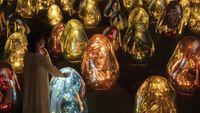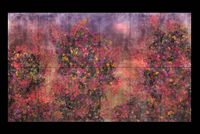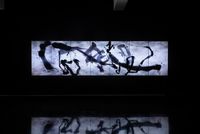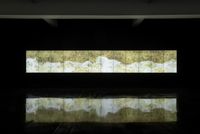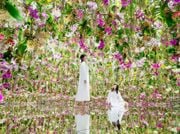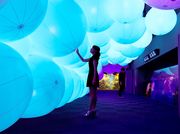teamLab is an artist collective comprised of approximately 400 'ultratechnologists' including but not limited to artists, mathematicians, architects, designers and engineers. Based in Tokyo, with outposts in Singapore and Shanghai, teamLab was founded by Toshiyuki Inoko in 2001 with the aim to change the relationship between people and the spaces they inhabit. teamLab believes in digital technology's ability to expand the possibilities of art and experience. The collective's work is characterised by the creation of immersive installations in which the physical and the digital world merge together.
Read MoreIn each unique installation, teamLab attempts to alter the viewer's perception of space using technology. The collective takes advantage of light, sound, kinetics and even smell to draw the viewer into their fabricated world. In the exhibition DMM.PLANETS Art (16 July-31 August 2016), which covered around 3000 square metres, teamLab focused on the presence of the viewer's body in the space and their capacity for sensorial experience and interaction. The installation was made of different 'planets', and each planet had its own unique environment, including smell. Such immersive installations allow the viewer to live out different experiences of space and go beyond normal perceptions of the world.
By the infinite possibilities made accessible through digital technology, teamLab's art aims to break free of physical confines; in the digital realm, an artwork can be as big and as imaginative as is within the creator's power. However, teamLab does not only utilitise the full range of the digital realm, it also digs back into history, adopting a wide range of influences—the collective draws on both traditional and contemporary structures of representation and performance. For example, for the 2013 Singapore Biennale (26 October 2013-16 February 2014), teamLab presented the immersive installation, Peace can be Realised Even Without Order. To view it at the Singapore Art Museum, one needed to receive admission through a door. Inside, the room beyond the door was lit only by the work—an interactive animated set of holographic dancers in traditional Japanese clothes. As the viewer walked through the dancers, motion sensors allowed the installation—the dancers—to react according to the movement. The viewer became participant in the dance as well as observer of it.
Casey Carsel | Ocula | 2018
